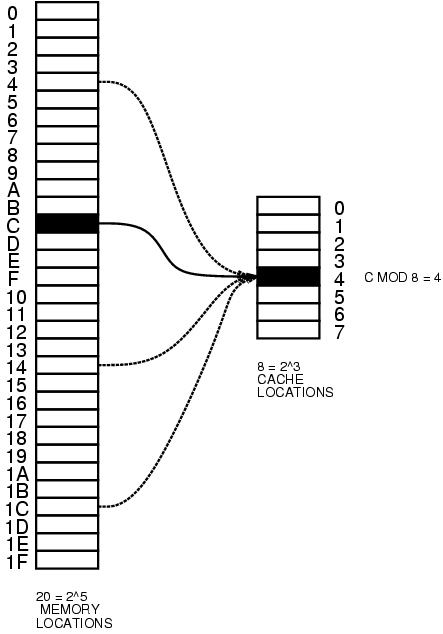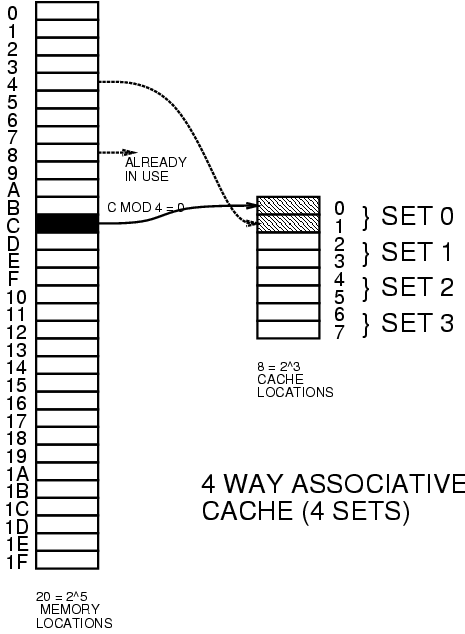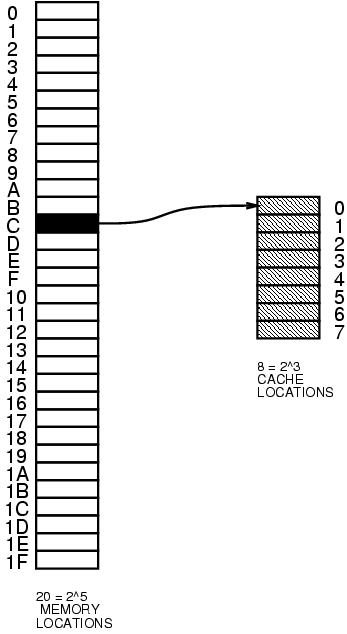
in this example, there are 20 memory block locations and 8 cache block locations (e.g. size of cache is only 1/4 the size of memory).
with direct mapping, the 20 memory locations are mapped to the 8 cache locations according to a MOD 8 mapping.
for example, memory location C gets mapped to cache location C MOD 8 = 4.
if, for example, memory block location 4, 14, or 1C now needed to be cached, there would be a conflict, even though the cache is only 1/8 full.
in most PCs L2 cache is direct mapped, if there is any L2 cache.

suppose, for example, there are 4 sets.
memory location C can be assigned to any cache location in set C MOD 4 = set 0.
thus memory location C can be mapped to either of the two cache locations (location 0 or location 1) in set 0.
this is much better than direct mapping.
however, there are still drawbacks.
for example, if we need to cache memory location 8, after memory locations C and 4 have been cached, we will have a conflict, even though the cache is only 1/4 full.
on a 486, L1 cache is typically set associative, 8k of cache in 16 byte blocks.
in this lecture, the focus is on L1 cache. L1 cache is tied to the CPU, while L2 cache is tied to main memory (main store RAM)

memory location C can be stored in any location within the cache.